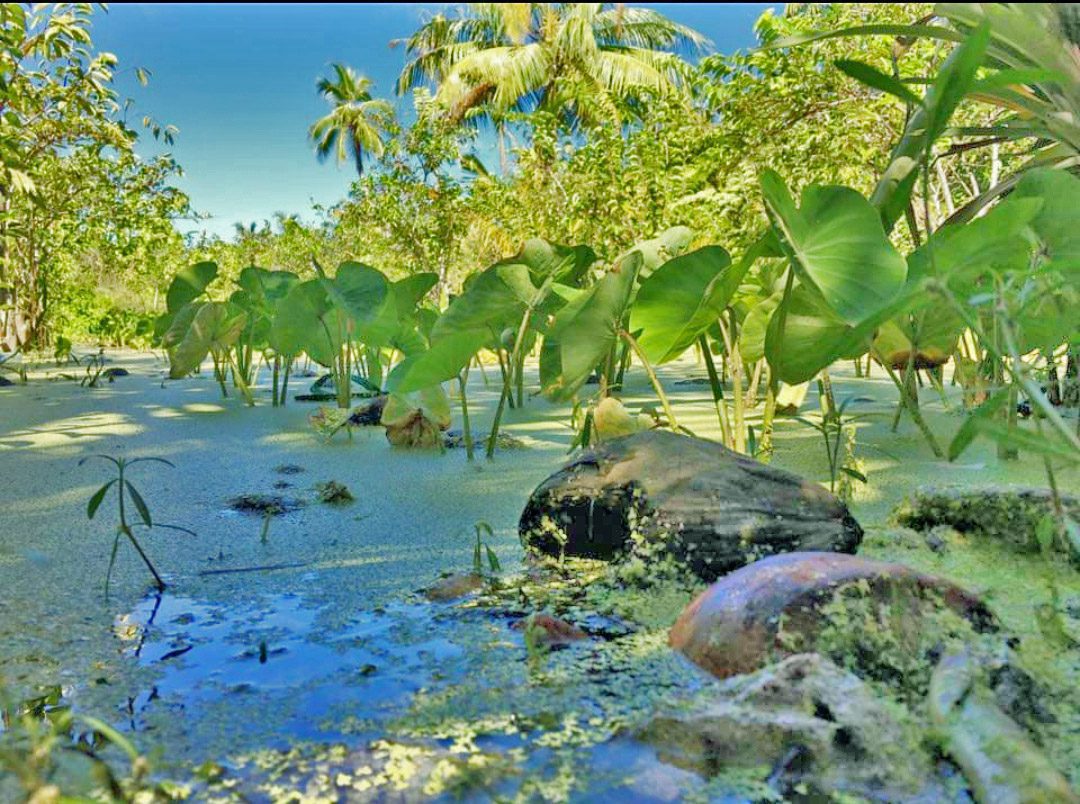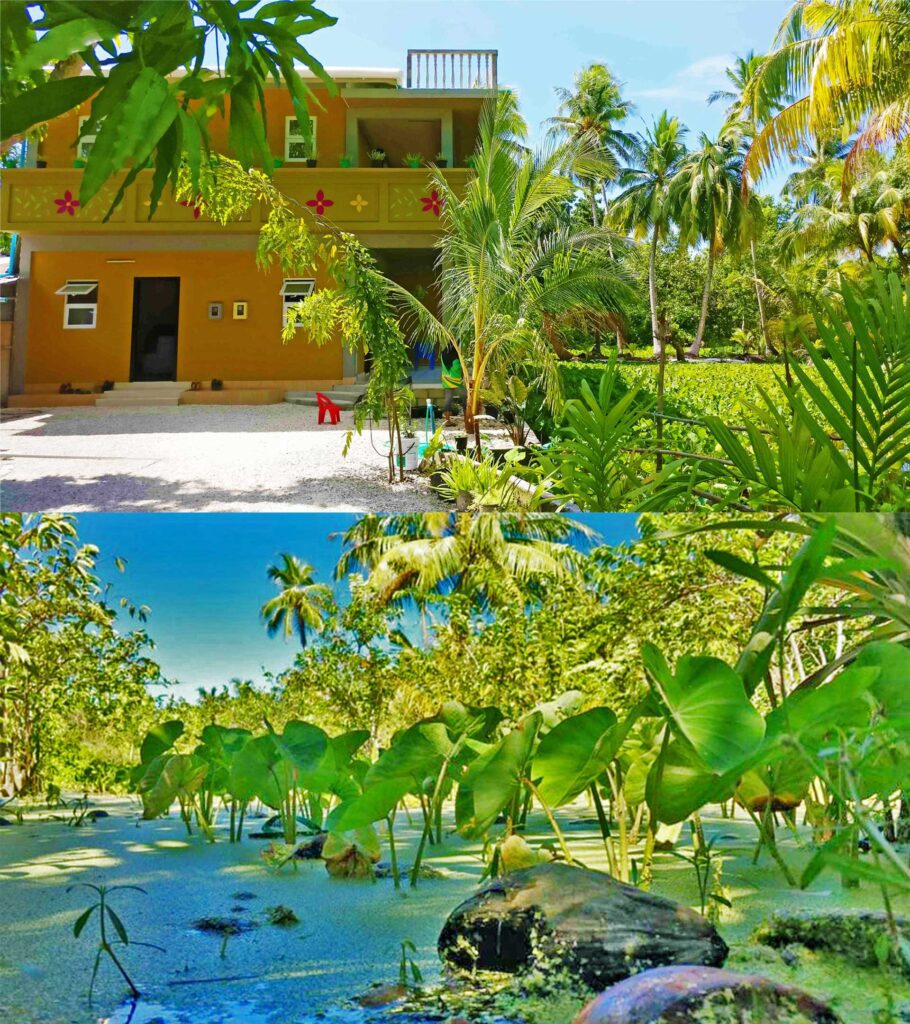
I thought of writing about a striking plant that inhabits our island. The backyard of my house is also covered with vast yam fields. I observe these plants during the heavy rainy season when the yam fields are filled up with water. But when I was a kid, I had no knowledge of these plants that are so baffling and impressive to me. People claim and mention some names of individuals who brought this plant to our island, but I don’t remember their names.
When the yam (ala) fields in our island are filled up with water, a bright green layer can be seen on the surface. It appears like green carpets floating on the surface. The appearance and the texture of this fascinating scene are amazing. It is scattered. We call it ‘fah kudhu javaahiru’—“tiny’ ‘gem leaves.” Jawaahiru means gem or precious stones. When we walk in the yam fields, it sticks on our legs. These are actually called duckweeds. This is the simplest and smallest flowering plant on earth.
In France, it is known as ‘water lentils.’ The surface of the water exhibits a striking view when these weeds occupy the yam fields. If we throw a stone or an object into the water, a ripple wave sends the weeds away from the point where the object landed, creating a circular area without the weeds. But within seconds, the weeds model again into a flattened texture. We ‘row’ small boats made from screw pine leaf (keyfa) on this spectacular water. When these small boats move through the weeds, the scenic beauty of this enjoyment is captivating. When the sunlight sparkles on the ‘green water,’ the resulting natural appearance is one of the most spectacular scenes that our island unfolds through its magnificent creations.
In some parts of the world, this plant was served alone as a medicine or drug. According to research conducted by Critical Metals for Enabling Technologies at Jacobs University Bremen (CritMET) in 2022, duckweed is not only rich in nutrients; it also stores rare earths to a particularly high degree.
Duckweed has a tiny leaf floating on the water. Its root is not anchored to the ground. But these thousands of plants form a precise and extraordinary layer on the surface of the water. Even if thrown stones into the water, within seconds the texture restores to the previous formation without altering the natural texture it is able to perform. We may see this plant as of no use. However, underneath its self-effacing appearance, there is huge potential for human beings. According to recent studies, this plant could become a real protein factory. It can comprise up to 45% protein—provided that optimal conditions are set.
Studies have shown that one hectare of duckweed can produce between 10 and 18 tons of protein per year. This plant has the ability to multiply very quickly. The quantity of duckweed in a pond can actually double in less than 48 hours (Muller, Bazinet, 2024). Research is being conducted to use duckweed as a future “superfood” for human nutrition. It contains about seven times as much protein as soy and is rich in omega-3 fatty acids. In Thailand, these tiny ‘gems’ are called ‘egg of water.’

